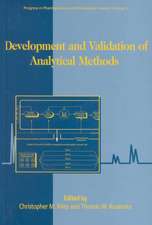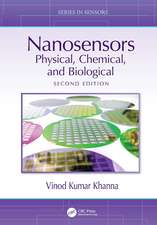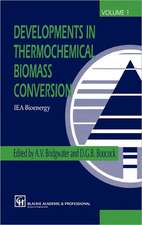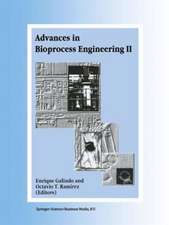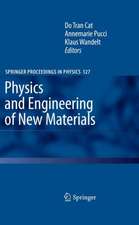Nanoantenna: Plasmon-Enhanced Spectroscopies for Biotechnological Applications
Editat de Marc Lamy de la Chapelle, Annemarie Puccien Limba Engleză Hardback – 24 ian 2013
Preț: 902.42 lei
Preț vechi: 1100.52 lei
-18% Nou
Puncte Express: 1354
Preț estimativ în valută:
172.67€ • 180.77$ • 142.88£
172.67€ • 180.77$ • 142.88£
Carte tipărită la comandă
Livrare economică 07-21 aprilie
Preluare comenzi: 021 569.72.76
Specificații
ISBN-13: 9789814303613
ISBN-10: 9814303615
Pagini: 452
Ilustrații: 99 b/w images and 36 color images
Dimensiuni: 152 x 229 x 33 mm
Greutate: 0.77 kg
Ediția:1
Editura: Jenny Stanford Publishing
Colecția Jenny Stanford Publishing
ISBN-10: 9814303615
Pagini: 452
Ilustrații: 99 b/w images and 36 color images
Dimensiuni: 152 x 229 x 33 mm
Greutate: 0.77 kg
Ediția:1
Editura: Jenny Stanford Publishing
Colecția Jenny Stanford Publishing
Public țintă
Academic and PostgraduateCuprins
Raman Spectroscopy Applied to Biomolecules Characterisation. Biomedical Vibration Spectroscopy. Bioreceptor Functionalization of Gold-Coated Sensor Surfaces. Magnetic Nanoparticle Surface Functionalization for Biomedical Applications. Plasmons in Low-Dimension Structures. Antenna Interaction in the Infrared. Enhanced Spectroscopies and Surface Plasmon Thin-Film Sensors. Nanostructures for Plasmonics: Design, Fabrication and Characterization. Surface Enhanced Infrared Spectroscopy. Surface Enhanced Raman Scattering: Application to Molecular Sensing. The SPR Biosensors. Coherent Anti-Stokes Raman Scattering (CARS Microscopy). Multi-Signal Processing Biosensors and Bioactuators Based on Biocomputing Concept.
Notă biografică
Marc Lamy de la Chapelle received his PhD in science physics in 1998 from the University of Nantes, France, on the study of carbon nanotubes by Raman spectroscopy. After holding post-doctoral positions at the Office National d'Etude et de Recherche en Aéronautique, Paris, and at the physics department of Tsinghua University, Beijing, China, he became associate professor at the Université de technologie de Troyes, France, in 2001. His research activities focus on nanooptics and Raman spectroscopy. He has worked on surface-enhanced Raman scattering (SERS). Currently, he is professor at the Paris 13 University at the Laboratory of Chemistry, Properties and Structure of the Biomaterials and Therapeutics Agents (CSPBAT UMR 7244). His research subject is the application of SERS and TERS to biological problems and, specifically, to the diagnosis of pathologies.
Annemarie Pucci has extensive experience in infrared spectroscopy of surfaces and nanostructures and is internationally known figure in the fields of infrared plasmonics, surface-enhanced infrared spectroscopy, and in situ infrared monitoring of thin layer growth. Prof. Pucci has published more than 150 peer-reviewed papers and book chapters. Currently, she is professor of experimental physics at the Ruprecht-Karls University of Heidelberg, Germany. As member of the Faculty of Physics and Astronomy, she is strongly involved in the master education on solid-state physics, including surface science.
Annemarie Pucci has extensive experience in infrared spectroscopy of surfaces and nanostructures and is internationally known figure in the fields of infrared plasmonics, surface-enhanced infrared spectroscopy, and in situ infrared monitoring of thin layer growth. Prof. Pucci has published more than 150 peer-reviewed papers and book chapters. Currently, she is professor of experimental physics at the Ruprecht-Karls University of Heidelberg, Germany. As member of the Faculty of Physics and Astronomy, she is strongly involved in the master education on solid-state physics, including surface science.
Descriere
This book concentrates on the various fields related to the development of a nanobiosensor and presents the latest information from renowned experts. It focuses on the enhanced spectroscopy, including SERS, SEIRA/SEIRS, and near-field optics, and the related physical processes (optical properties of metallic nanoparticles, plasmon resonance, field enhancement, etc.). Some applications in the biological and medical field are presented to show the potential of such techniques as sensors if combined with functionalization.

